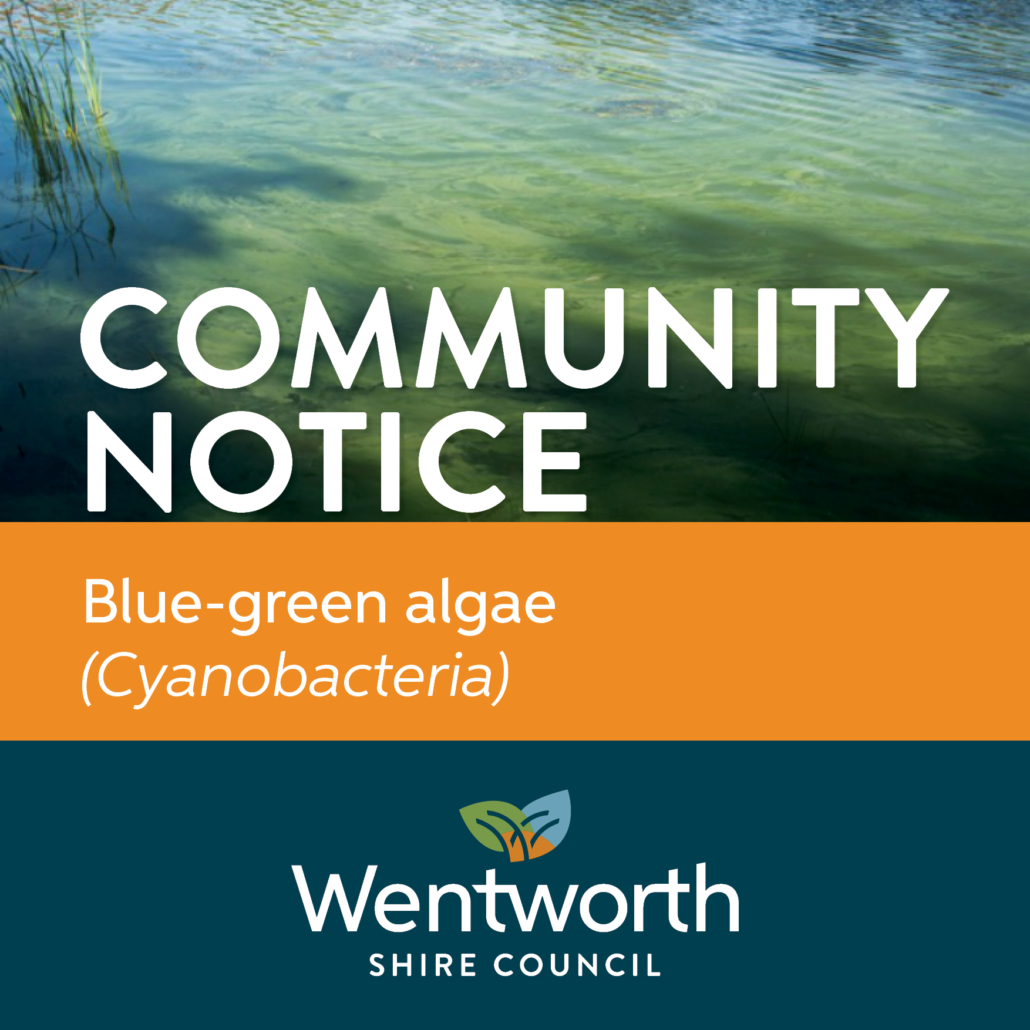WaterNSW has released a blue-green algae report for the Murray River, Darling River and Menindee Lakes.

Summary for Wentworth Shire:
RED ALERT
Darling River at Pooncarie, Burtundy & Ellerslie
Darling Anabranch at the Silver City Highway crossing
AMBER ALERT
Murray River at Curlwaa
Read the full blue-green algae report (10 February 2023):
Read the media release (13 February 2023):
Alert Definitions for Recreational Waters
Alert Definitions as specified in The National Health and Medical Research Council (NHMRC) Guidelines for Managing Risks in Recreational Water 2008. The use of these guidelines is endorsed by the Scientific Subcommittee of the NSW Algal Advisory Group.
RED ALERT
These alert levels represent 'bloom' conditions. Water will appear green or discoloured and clumps or scums could be visible. It can also give off a strong musty or organic odour. Algae may be toxic to humans and animals. Contact with or use of water from red alert areas should be avoided due to the risk of eye and skin irritation. Drinking untreated or boiled water from these supplies can cause stomach upsets. Alternative water supplies should be sought or activated carbon treatment employed to remove toxins. People should not fish when an algal scum is present. Owners should keep dogs away from high alert areas and provide alternative watering points for stock.
AMBER ALERT
Blue-green algae may be multiplying, and the water may have a green tinge and musty or organic taste and odour. The water should be considered as unsuitable for potable use and alternative supplies or prior treatment of raw water for domestic purposes should be considered. The water may also be unsuitable for stock watering. Generally suitable for water sports, however people are advised to exercise caution in these areas, as blue-green algal concentrations can rise to red alert levels quickly under warm, calm weather conditions.
GREEN ALERT
Blue-green algae occur naturally at low numbers. At these concentrations, algae would not normally be visible, however some species may affect taste and odour of water even at
low numbers and does not pose any problems for recreational, stock or household use.






